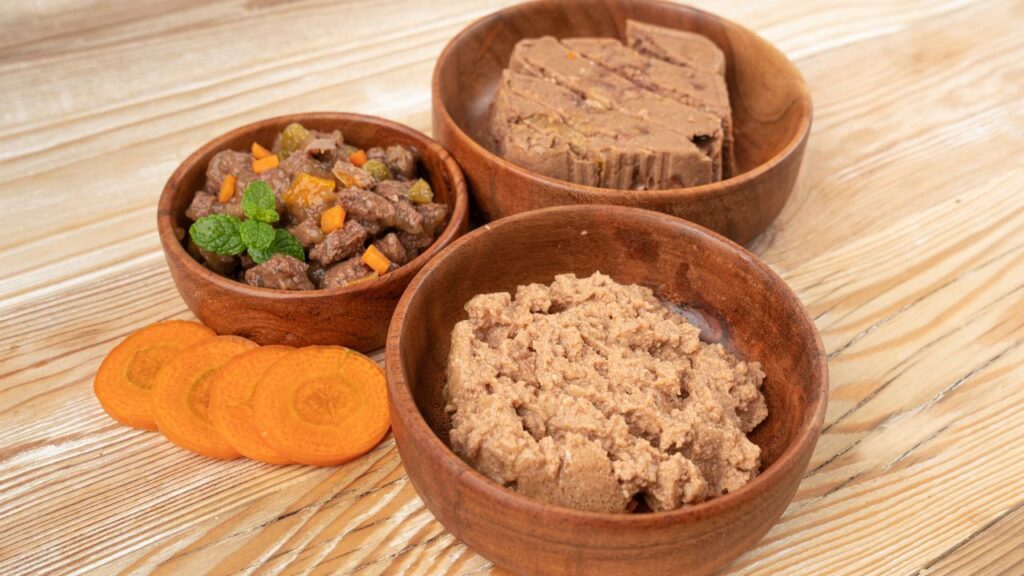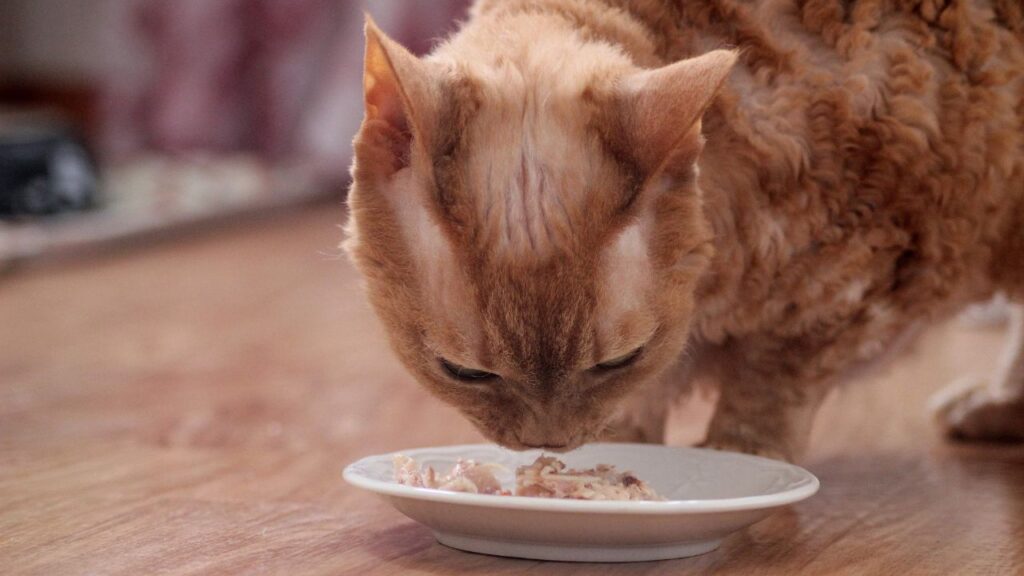Have you ever looked at your cat and thought, “I bet they’d be healthier if I knew exactly what’s going into their food”? Well, you’re not alone. As more pet owners become conscious of what’s in commercial pet foods, homemade cat food is gaining popularity. After all, you want the best for your furry friend, right?
But what goes into creating homemade cat food? Is it safe? Is it practical? And, most importantly, how do you ensure your cat gets all the nutrients they need for a long, happy life? In this comprehensive guide, we’ll break it all down, offering you everything you need to know about making homemade food for your cat. From recipes and nutritional requirements to the benefits and risks, we’ll cover it all.
Why Homemade Cat Food?
Before diving into the details of how to make homemade cat food, let’s take a moment to consider why you might want to make the shift in the first place. The truth is, not all commercial cat food is created equal, and the quality of ingredients varies greatly across brands. In fact, many mass-produced cat foods contain fillers, artificial preservatives, and low-quality meats that don’t always provide the balanced nutrition cats need.
Cats are obligate carnivores, which means their bodies are designed to thrive on a diet that’s rich in animal protein. While some commercial foods do meet these needs, there’s always peace of mind knowing exactly what’s in your cat’s bowl. With homemade cat food, you have complete control over the ingredients, ensuring that your cat is getting the best nutrition possible.
Benefits of Homemade Cat Food
- Complete Control Over Ingredients: When you make homemade cat food, you decide exactly what goes into it. No mystery fillers, artificial additives, or low-quality meat products.
- Improved Health: Fresh, whole ingredients are better for your cat’s digestive system and overall health. Plus, they’re less likely to contain allergens that could be harmful.
- Customizable Diet: If your cat has special dietary needs—whether due to food allergies, sensitivities, or health conditions—making your own food allows you to tailor meals to their specific requirements.
- Better Weight Management: Many commercial cat foods contain excess carbohydrates or unnecessary additives. Homemade meals allow you to create a balanced, protein-packed diet that promotes a healthy weight for your cat.
Understanding Your Cat’s Nutritional Needs
Before you start whipping up a homemade cat food recipe, it’s important to understand what goes into making a balanced diet for your feline friend. Cats require specific nutrients that differ significantly from human needs. Here’s a quick breakdown of what’s essential in a cat’s diet:
1. Protein
As obligate carnivores, cats need a high amount of animal protein to thrive. This is the cornerstone of their diet. Sources of high-quality animal protein include chicken, turkey, beef, and fish. These proteins provide amino acids such as taurine, which is essential for heart health, vision, and reproductive functions.
2. Fat
Fat is a key energy source for cats. They also need fat to help absorb fat-soluble vitamins like A, D, E, and K. Fatty acids like omega-3 and omega-6, found in fish oil, also support coat health and skin.
3. Vitamins and Minerals
Cats require certain vitamins and minerals that they can’t produce on their own. These include vitamins A, D, and E, along with calcium, magnesium, phosphorus, and potassium. Some of these nutrients, such as taurine, can only be found in animal tissues, so they must be included in their diet for optimal health.
4. Water
Cats tend to have a low thirst drive, which is why hydration is often an overlooked aspect of their health. Including wet food or adding water to homemade meals can help keep your cat hydrated, which is important for kidney function and overall well-being.

Preparing Homemade Cat Food: What You Need to Know
Making homemade cat food requires some research and preparation to ensure that it’s nutritionally balanced. Cats require specific amounts of protein, fat, vitamins, and minerals to stay healthy, so it’s important not to “wing it” when preparing their food. Here are some key things to consider when making homemade cat food:
1. Choose High-Quality Protein Sources
As we mentioned earlier, protein is the foundation of a cat’s diet. You should aim to use fresh, high-quality meats like chicken, turkey, beef, or even rabbit. Avoid using low-quality cuts or processed meats, which may not provide the necessary nutrients.
2. Include Organs for Nutritional Balance
In the wild, cats would eat not only the muscle meat but also the organs of their prey, such as the liver, heart, and kidneys. These organs are rich in vitamins and minerals, particularly vitamin A and iron. Make sure to include these organ meats in your homemade recipes, but don’t overdo it—balance is key.
3. Add the Right Fats
Healthy fats are essential for your cat’s energy, brain function, and coat health. You can add fats in the form of fish oil (rich in omega-3 fatty acids) or chicken fat. Remember to include enough fat to keep your cat’s diet balanced, but not too much, as obesity can become an issue over time.
4. Supplements for Essential Nutrients
Since homemade cat food might not provide every nutrient your cat needs, you’ll want to use supplements to ensure they’re getting everything necessary for optimal health. Here are a few common supplements for homemade cat food:
- Taurine: An amino acid essential for heart and eye health.
- Calcium: To support bone health, especially in growing kittens.
- Vitamin A: Cats can’t convert beta-carotene (from vegetables) into vitamin A, so it’s crucial to include it in their diet from animal sources.
- Fish Oil: Rich in omega-3 fatty acids, this supports skin, coat, and brain health.
5. Avoid Harmful Ingredients
There are a number of human foods that are toxic to cats and should never be included in homemade cat food. These include:
- Onions and garlic
- Chocolate
- Grapes and raisins
- Dairy products (many cats are lactose intolerant)

Homemade Cat Food Recipes
Here are a couple of simple recipes to get you started on your homemade cat food journey. These recipes are designed to meet the nutritional needs of adult cats. However, it’s always a good idea to consult with a veterinarian or pet nutritionist before making any changes to your cat’s diet.
Recipe 1: Chicken and Liver Feast
Ingredients:
- 2 pounds chicken (boneless, skinless)
- 1/2 pound chicken liver
- 1 tablespoon fish oil
- 1/4 teaspoon taurine supplement
- 1/4 teaspoon ground eggshell (for calcium)
- 1/4 cup water
Instructions:
- Cook the chicken and liver by boiling or baking them.
- Once cooked, blend the meat, liver, and fish oil in a food processor until smooth.
- Add the taurine supplement, eggshell, and water to the mixture, blending well.
- Divide into portion-sized servings and refrigerate or freeze.
Recipe 2: Turkey and Salmon Delight
Ingredients:
- 1.5 pounds ground turkey
- 1/2 pound salmon (canned in water, drained)
- 1 tablespoon olive oil
- 1/4 teaspoon taurine supplement
- 1/4 teaspoon vitamin E supplement
- 1/2 cup water
Instructions:
- Cook the turkey by pan-frying or baking it.
- Blend the cooked turkey with the salmon and olive oil.
- Add the taurine, vitamin E, and water, and blend until smooth.
- Portion the food into servings and store in the fridge or freezer.
| Recipe | Main Protein | Additional Nutrients | Serving Size |
|---|---|---|---|
| Chicken and Liver Feast | Chicken, Liver | Fish oil, Taurine, Calcium | 1/4 cup per day |
| Turkey and Salmon Delight | Turkey, Salmon | Olive oil, Taurine, Vitamin E | 1/4 cup per day |
FAQs About Homemade Cat Food
1. Can I just make food from leftovers? No, making food from human leftovers isn’t recommended because it might not meet your cat’s nutritional needs. Cats require a very specific balance of protein, fat, and nutrients that human food typically lacks.
2. Can I feed my cat only homemade food? Yes, but it’s crucial that you balance the food properly and include all necessary nutrients. That’s where consulting with a vet or pet nutritionist comes in.
3. How do I store homemade cat food? Homemade cat food should be stored in the fridge for up to three days or frozen for longer periods. Always portion out the meals and store them in airtight containers.
4. Can homemade food improve my cat’s coat? Yes! Fresh, protein-rich foods combined with healthy fats (like fish oil) can contribute to a shiny, healthy coat and vibrant skin.
Final Thoughts
Making homemade cat food can be a rewarding experience, giving you peace of mind knowing exactly what’s going into your cat’s meals. But remember, the key to a healthy homemade diet is balance. You want to ensure that your cat is getting everything they need—protein, fat, vitamins, and minerals—in the right proportions. It’s crucial to do your research, consult with a veterinarian or pet nutritionist, and perhaps even work with a specialist to create a formula that is both nutritionally complete and safe for your cat.
While the process may take some time to master, the benefits for your cat’s health and happiness are well worth the effort. Homemade cat food allows you to provide a higher-quality, more personalized diet that supports your cat’s overall well-being. It can also be a way to prevent and manage certain health issues, all while offering a deeper connection with your pet.
So, whether you’re starting with a few homemade meals as a treat or transitioning your cat to a full-time homemade diet, take it one step at a time. Your cat will thank you for the love and care you put into their food—and the bond you share will only grow stronger.

